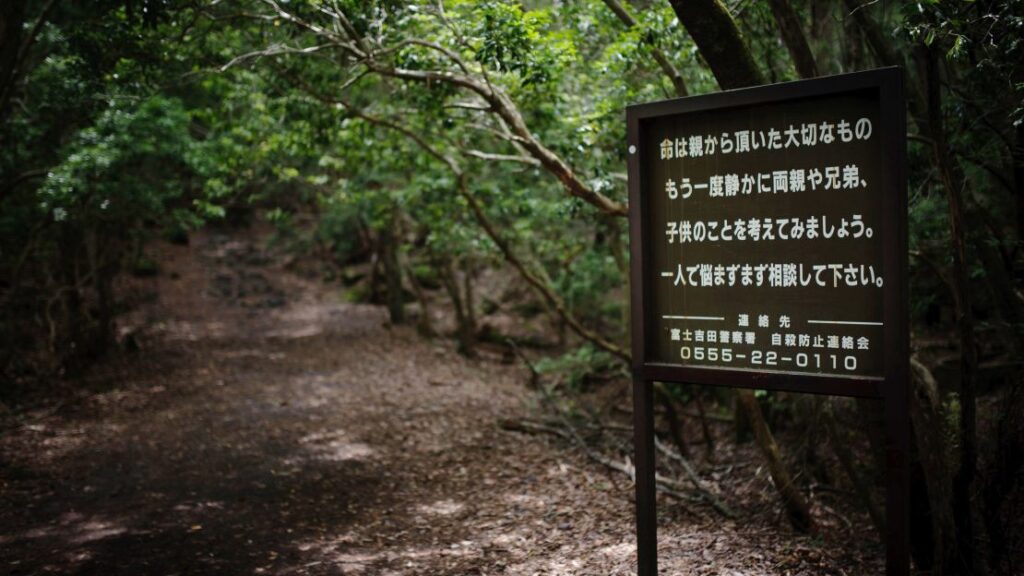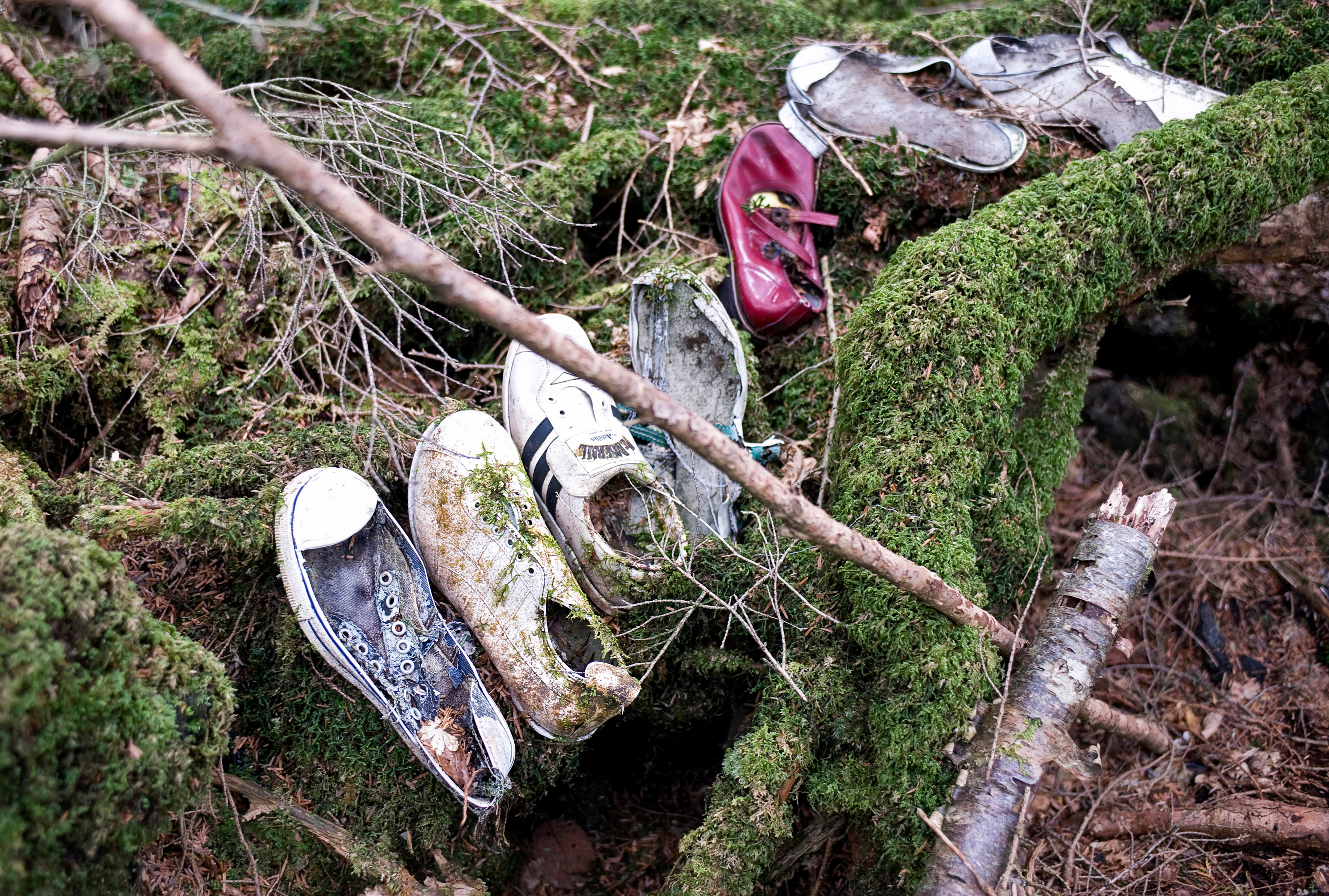
At the base of Japan’s Mount Fuji lies a forest so dense and quiet that it’s called “The Suicide Forest.”
Aokigahara, also known as the “Sea of Trees,” is beautiful yet haunting, drawing visitors with its mystery and tragic history.
Beneath its towering trees, stories of sorrow and folklore linger.
A Natural Wonder with a Dark Side
Aokigahara covers about 30 square kilometers, sitting on volcanic soil from Mount Fuji’s eruptions long ago.
The forest is so thick that sunlight barely gets through, creating an eerie twilight even during the day.
The uneven ground, covered in moss and twisted roots, is dotted with caves.
Navigating it can be tricky as compasses and GPS often don’t work due to the iron-rich soil.
Despite its reputation, Aokigahara is stunning.
Tall trees, lush greenery, and quiet wildlife make it feel otherworldly.
But the silence—heavy and endless—can feel unsettling, almost as if the forest itself is alive.
For hikers and nature enthusiasts, this silence can be both a blessing and a curse, offering a meditative stillness while also amplifying a sense of unease.

A History of Death
Aokigahara’s link to death isn’t new.
Stories of ubasute — an old legend about abandoning the elderly in remote areas during times of famine — are tied to the forest.
While it’s unclear if this practice truly happened here, the tale adds to the forest’s dark reputation.
In modern times, the forest’s fame grew after Seicho Matsumoto’s 1960 novel Tower of Waves, where characters end their lives in Aokigahara.
Over time, fiction blurred with reality, and the forest became known as a place for suicide.
This reputation has cemented its place in Japanese cultural consciousness as both a site of tragedy and a reflection of societal struggles.

A Place of Tragedy
Japan has one of the highest suicide rates in the world, often linked to societal pressure and struggles with mental health.
Aokigahara has sadly become a symbol of this crisis.
Though exact numbers are not released to avoid encouraging more deaths, it’s believed many people take their lives in the forest each year.
Visitors often come across personal belongings left behind: shoes, notes, and other items.
Some describe a heavy sadness in the air, as if the forest holds onto the pain of those who have passed.
Local authorities and volunteers search the area regularly to recover remains and remove these items.
For those conducting these searches, the emotional toll can be immense, as they often encounter heartbreaking scenes that stay with them.
How Culture Shapes the Forest’s Role
Aokigahara’s reputation is deeply tied to Japanese attitudes about death.
Concepts of honor and shame play a big role in how some view suicide.
For centuries, it was seen as a way to preserve dignity or escape failure.
However, there’s been growing awareness about mental health, with efforts to reduce stigma and offer support.
The connection between cultural values and Aokigahara’s grim reputation is complex.
On one hand, the forest’s association with death feeds its eerie allure; on the other, it reflects broader societal issues.
These cultural nuances make the forest more than just a location—it’s a symbol of a nation’s relationship with life, death, and the pressures in between.
Signs now stand along trails in the forest, urging visitors to think of their families and seek help.
These small but meaningful efforts show that even in darkness, there is hope.
Many of these signs include hotline numbers and messages reminding people of their worth, serving as beacons of light in a place known for its shadows.
A New Perspective
Locals and officials are working to change how people see Aokigahara.
They want visitors to appreciate its natural beauty instead of focusing on its dark side.
The forest offers scenic trails, unique plants, and fascinating lava caves for exploration.
One of the most popular attractions is the Narusawa Ice Cave, a natural wonder that stays frozen year-round.
Visitors can also explore the Wind Cave and Fugaku Lava Cave, which offer glimpses into the forest’s volcanic origins.
These sites highlight the geological significance of Aokigahara, showing it as a place of wonder and discovery rather than despair.
While its tragic history can’t be erased, many hope Aokigahara can also be a place of healing and wonder, not just sorrow.
Initiatives to promote eco-tourism and educational programs about the forest’s unique ecosystem are part of this effort to redefine its image.
The Forest’s Unshakable Mystique
The forest’s eerie reputation still draws people worldwide. Some believe it’s haunted by spirits, or yurei, tied to the pain of those who died there.
Visitors tell stories of ghostly figures and strange sounds, while skeptics blame it on imagination and the forest’s strange acoustics.
Folklore aside, Aokigahara’s mystique lies in its ability to evoke profound emotions.
Its stillness can feel peaceful or oppressive, depending on one’s perspective.
For some, it’s a place of reflection; for others, it’s a reminder of life’s fragility.
Aokigahara has also appeared in books, movies, and documentaries.
Some portray it respectfully, while others sensationalize its tragedy, sparking debates about ethics and storytelling.
One notable film, The Forest (2016), faced criticism for exploiting the forest’s reputation without addressing its deeper cultural and emotional context.
A Place of Reflection
Walking through Aokigahara is an unforgettable experience. It’s a place of beauty and sorrow, where nature and human emotion collide.
The forest reminds us of the importance of mental health and the need for compassion.
For those who visit, Aokigahara offers a chance to reflect on the interplay of life and death, beauty and darkness.
It’s a reminder that even in the quietest places, there is much to learn about ourselves and the world around us.
If you or someone you know is struggling, help is available. In Japan, contact TELL Lifeline at 0800-300-8355. For international support, reach out to a local crisis hotline. Remember, your life is valuable, and there is always help.





